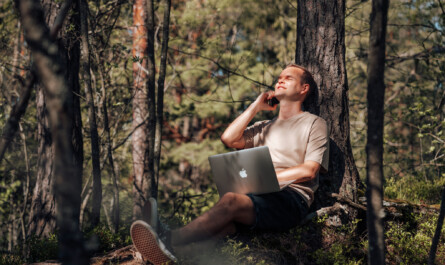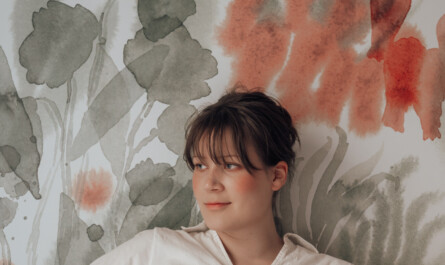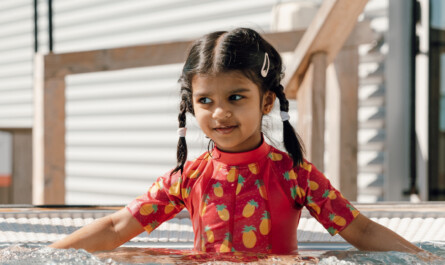Korkeasaari Zoo is one of the world’s oldest zoos, opened in 1889. Korkeasaari is home to animals ranging from the tundra to tropical rainforests. The island is home to more than 150 different animal species and nearly a thousand different plant varieties.
;)
The zoo was established near the end of the nineteenth century on the rocky island of Korkeasaari. The zoo’s mission was to provide an enjoyable pastime while educating and informing those who visited.
Korkeasaari Zoo construction began in the early 1890s when the island was leased to the Helsinki Brewing Company. First, other structures on the island were constructed, such as Restaurant Pukki, which is still in operation today and was opened in 1884.
On the island, a decorative waiting room for ship passengers and a gardener’s apartment was completed in the following years. A separate greenhouse and stone exhibition were also built on the island for educational purposes. In those days, the island also had a bowling alley.
Initially, the establishment of a zoo was considered in Alppila, Helsinki, where a park area known as the Zoo is now located. The Alppila zoo project, however, was rejected by the Helsinki City Council, and the zoo was built in its original location in Korkeasaari.
The first animals to live in Korkeasaari were two bears named Misha and Masha, who were given to the zoo a year before it opened.
Animals received as donations played an essential role in the early days of Korkeasaari, as animals were caught and sold for much more than they are now.
Finke, a young polar bear who arrived in Korkeasaari in 1890, was one of the first significant animal inhabitants. A separate polar bear castle was built on Korkeasaari’s west shore the following year. In the years that followed, stone bear castles were also completed.
The Korkeasaari Zoo’s mission was to focus specifically on animal species from the Northern Hemisphere, but they were also willing to accept tropical animals if space was available. Monkeys and parrots brought aboard ships were common donations in the zoo’s early years.
Donations were not limited to animals; for example, Restaurant Pukki got its worthy symbol from a bronze goat statue acquired from the Paris World Exhibition the same year the zoo opened.
After the prohibition law was enacted in 1919, Helsinki Anniskeluyhtiö was forced to relinquish ownership of Korkeasaari. Following that, the city of Helsinki took over the zoo, and the area became solely dedicated to zoo operations.
Several well-known buildings and areas arose in the region over the following years and decades: the current Monkey Castle, which was initially built for lions; the Bear Castle, completed in 1952 and still in use; and the Cat Valley, which opened in the 1960s to commemorate the sanctuary’s 75th anniversary.
In addition to its expansion, Korkeasaari earned a reputation as a snow leopard breeder. The birth of a snow leopard litter and the cubs’ survival were extremely rare then.
When a bridge connecting Korkeasaari and Mustikkamaa was built in 1974, keeping the zoo open all year became possible.
Kissalaakso was renovated, and the Amazonia and Borelia houses were finished in the following decade. In the 1980s, the last polar bears on Korkeasaari died, at least for now.
Korkeasaari Zoo’s management structure shifted from a City of Helsinki office to a public benefit foundation at the start of 2018. Korkeasaari was able to participate in international cooperation and species protection significantly more extensively as a foundation.
The Korkeasaari Zoo Foundation is non-profitable, and the City of Helsinki continues to fund Korkeasaari’s operations.
Korkeasaari is home to over 150 animal species and approximately 1,500 individual animals. Although the zoo was initially intended to focus on animals from the northern hemisphere, there has been a significant shift in this regard. Animals from the arctic regions to tropical rainforests can be found in Korkeasaari.
Korkeasaari, of course, has several animal houses and areas dedicated to various climates and environmental types.
The big cats can still be found in the Cat Valley,d in 1964. Korkeasaari’s lions were initially housed in the Lion Castle, built in 1936 and have since been renovated and renamed the Monkey Castle.
The Borelia house, built in 1995, is a haven for birds and small mammals.
Korkeasaari’s more tropical species, on the other hand, would be more at home in the Amazonia house, which is home to lizards, snakes, turtles, spiders, insects, fish, frogs, small monkeys, and parrots.
Weather permitting, the public can view the birds and monkeys in separate outdoor gardens.
Africasia, a habitat for African and Asian animals, opened in the summer of 2002. It was built after the then-Finnish President, Martti Ahtisaari, visited South Africa’s national zoo and received both animals and plants as a donation. Africasia is home to pygmy mongooses, reptiles, frogs, insects, spiders, and birds. All of the species are native to African savannas and Asian rainforests.
The Hämärätalo, Korkeasaari’s newest animal house, opened in 2016 and is dedicated to twilight-active species. Domestic animal species, such as forest deer and wolverine, are on display in the Korpi area, completed in 2017.
When Korkeasaari was founded, the island could only be reached by steamboat. However, transport connections have diversified significantly, and today you can quickly get to the island both with your means of transport and with the help of public transportation.
By metro to Kalasatama: From Kalasatama metro station, Korkeasaari is about a kilometre’s walk. The green concrete turtles serve as Korkeasaari’s guideposts, leading to the zoo via Isoisänsilta.
Bus 16 from Rautatientori: Bus 16 from Rautatientori (departs from platform 17) usually runs every 20 minutes to the Korkeasaari ticket office. The bus can be crowded during busier times.
By bus 50 or 59 from Pasila train station: Buses 50 from Maunula and 59 from Pajamäki run through Pasila train station to Kalasatama Koksikatu terminus, from where it is about a kilometre long walk over Isoisänsilla to Mustikkamaa’s ticket office. When going in the opposite direction, the closest departure point is the Polarissenkatu stop, closer to Isoisänsilta.
By water bus: The water bus to Korkeasaari runs from Kauppatori daily from the beginning of June to the end of August. The water bus also operates on weekends during May and September. The trip to Korkeasaari takes about 20 minutes, and the water bus runs in both directions once an hour. The departure from Kauppatori takes place on the same side, and the return journey from Korkeasaari starts on the other side. Water buses are accessible and operated by JT-Line.
You can buy both individual admission tickets and annual passes to Korkeasaari, which are on sale all year round at the on-site ticket office and the online store.
Advance tickets purchased from the online store are valid for three months (90 days) from the date of purchase. You can also buy entrance tickets as a gift at Mustikkamaa’s ticket office. Tickets purchased as a gift are valid until the end of that year. You can also buy an annual card as a gift if you wish.
Ticket prices in 2022:
In the ticket prices, the first mentioned is the ticket purchased in advance from the online store, the second is the ticket purchased at the ticket office, and the third is the evening ticket sold after 4 pm.
Seasonal cards
The zoo is open every day of the year, and, as a rule, the zoo always opens at ten o’clock and closes between 4 and 8 pm.
During the summer months (June-August), Korkeasaari is open until 8 pm. In May and September, the zoo is open until 6 pm and in other months, as a rule, until 4 pm.
In terms of opening hours, however, different public holidays must be considered, during which exceptional opening hours are often observed. You can find detailed information about opening hours on Korkeasaari’s website.
In addition to zoo operations, Korkeasaari plays a vital role in international animal protection work. You can learn more about conservation work matters on Korkeasaari’s website.
Are you on vacation in Helsinki and intend to visit Korkeasaari as well? Book a hotel room at the VALO Hotel in Helsinki’s Ruskeasuo that is close to public transportation and offers a variety of services.

WORK + HOTEL PACKAGE
Spend the perfect summer remote work day and hotel night at VALO! Start your day just the way it suits you. Relaxing sleep, delicious breakfast, inspiring work environment & the steam of the wood saunas. Turn your hotel room into a workspace if needed!

SUMMER HOLIDAY HELSINKI
The light of a summer evening, the warmth of a log sauna, and a dip in the cold plunge pool. Enjoy a delicious dinner at Bistro ELO and then admire the sunset from the rooftop terrace. Book the most relaxing staycation this summer at VALO Hotel Helsinki at a special summer rate!

FAMILY HOTEL PACKAGE
Book a carefree family vacation at VALO Hotel Helsinki, near the city center and surrounded by nature. Children eat and stay for free according to the campaign terms!
Sources: Korkeasaari Zoo website
Main Article: Annika Sorjonen, Korkeasaari Zoo
